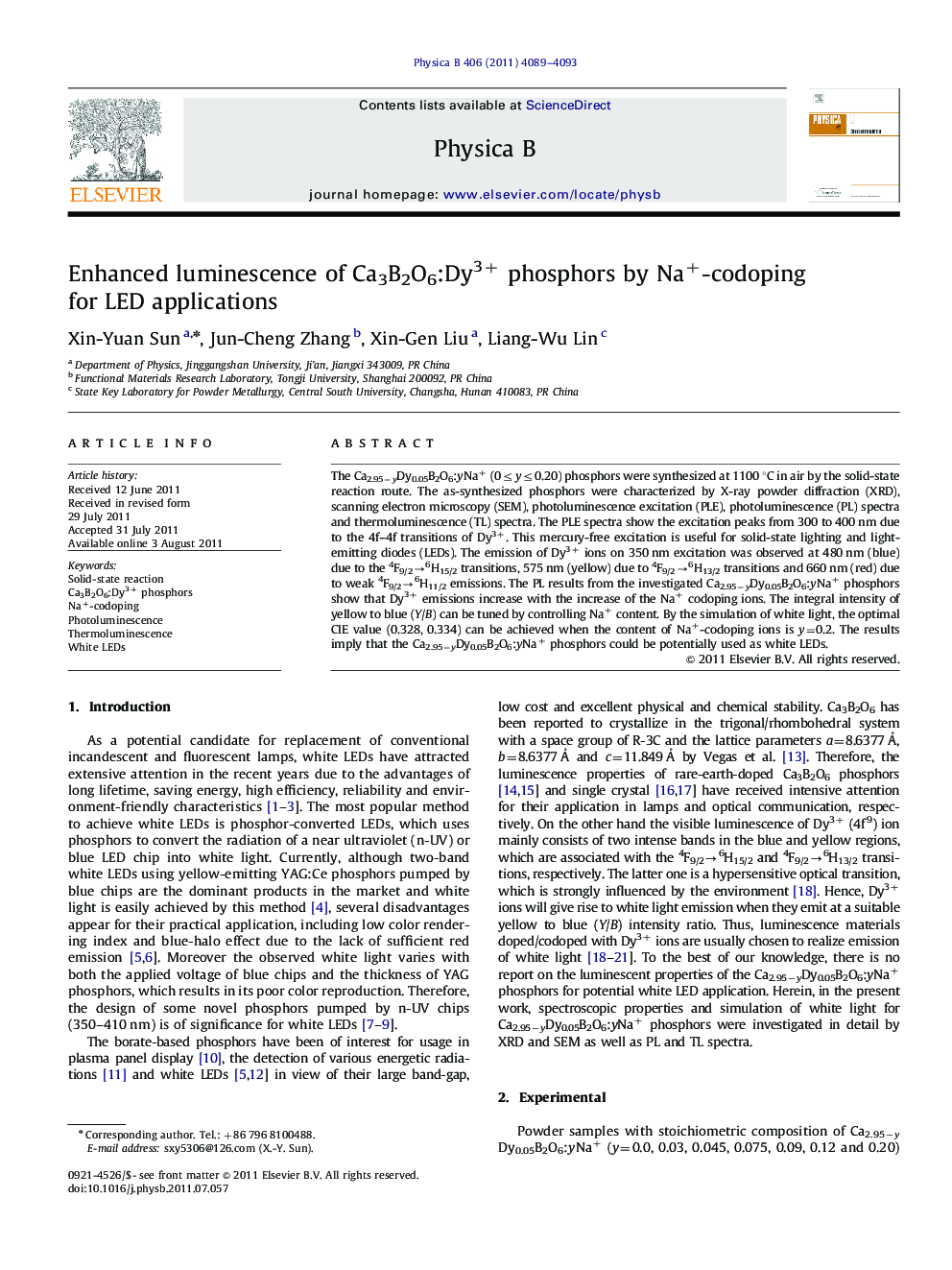| Article ID | Journal | Published Year | Pages | File Type |
|---|---|---|---|---|
| 1811408 | Physica B: Condensed Matter | 2011 | 5 Pages |
The Ca2.95−yDy0.05B2O6:yNa+ (0≤y≤0.20) phosphors were synthesized at 1100 °C in air by the solid-state reaction route. The as-synthesized phosphors were characterized by X-ray powder diffraction (XRD), scanning electron microscopy (SEM), photoluminescence excitation (PLE), photoluminescence (PL) spectra and thermoluminescence (TL) spectra. The PLE spectra show the excitation peaks from 300 to 400 nm due to the 4f–4f transitions of Dy3+. This mercury-free excitation is useful for solid-state lighting and light-emitting diodes (LEDs). The emission of Dy3+ ions on 350 nm excitation was observed at 480 nm (blue) due to the 4F9/2→6H15/2 transitions, 575 nm (yellow) due to 4F9/2→6H13/2 transitions and 660 nm (red) due to weak 4F9/2→6H11/2 emissions. The PL results from the investigated Ca2.95−yDy0.05B2O6:yNa+ phosphors show that Dy3+ emissions increase with the increase of the Na+ codoping ions. The integral intensity of yellow to blue (Y/B) can be tuned by controlling Na+ content. By the simulation of white light, the optimal CIE value (0.328, 0.334) can be achieved when the content of Na+-codoping ions is y=0.2. The results imply that the Ca2.95−yDy0.05B2O6:yNa+ phosphors could be potentially used as white LEDs.
